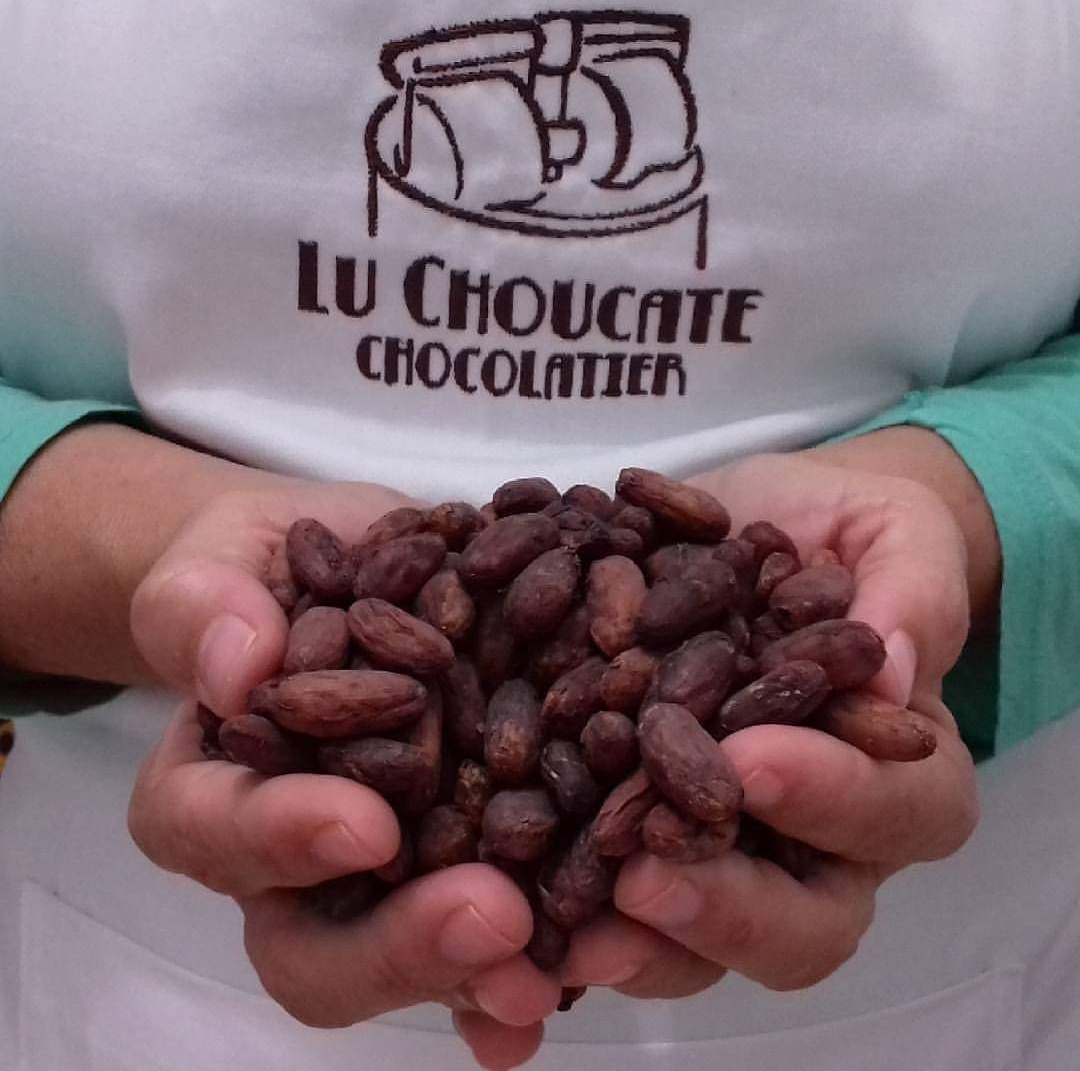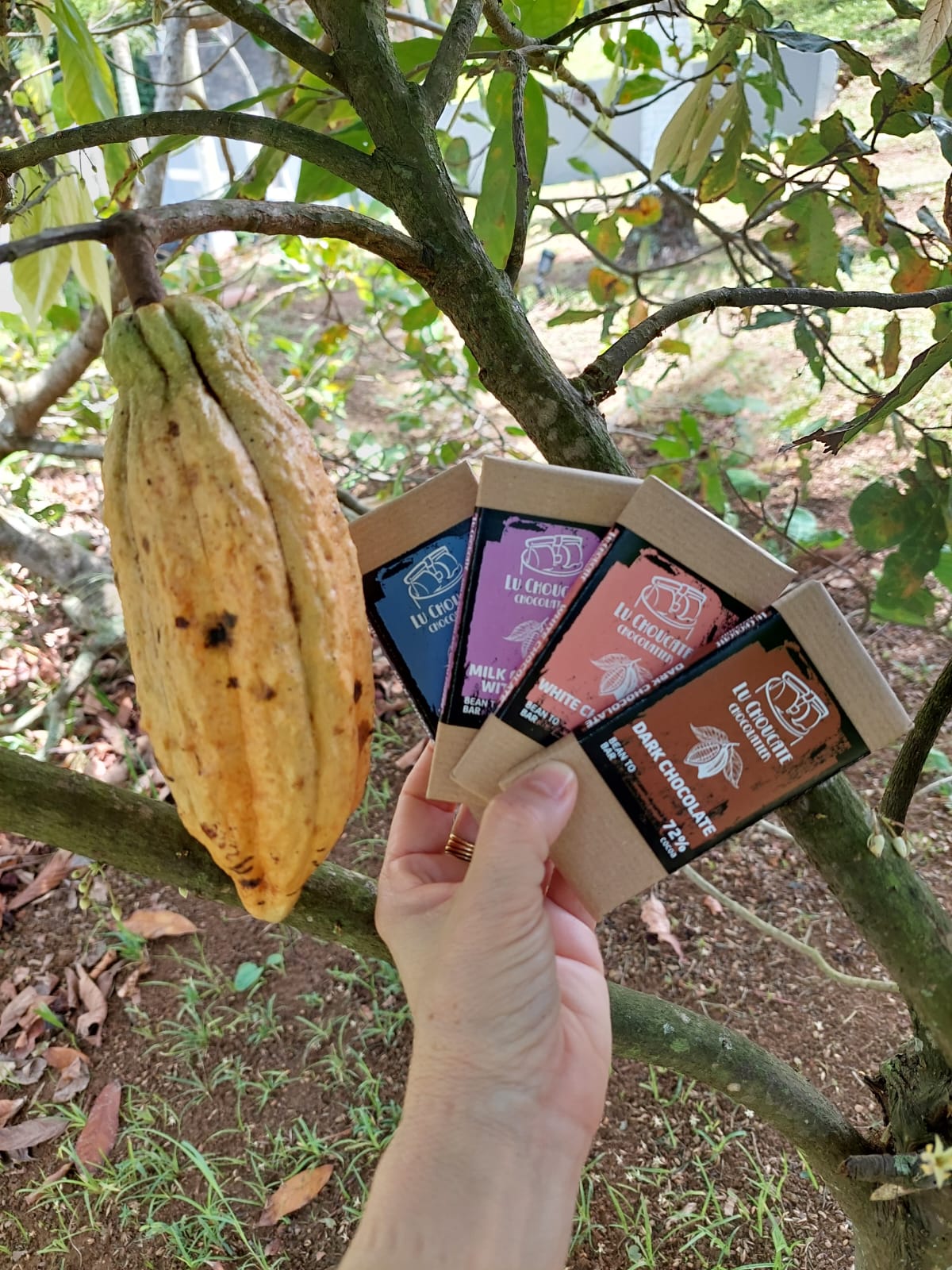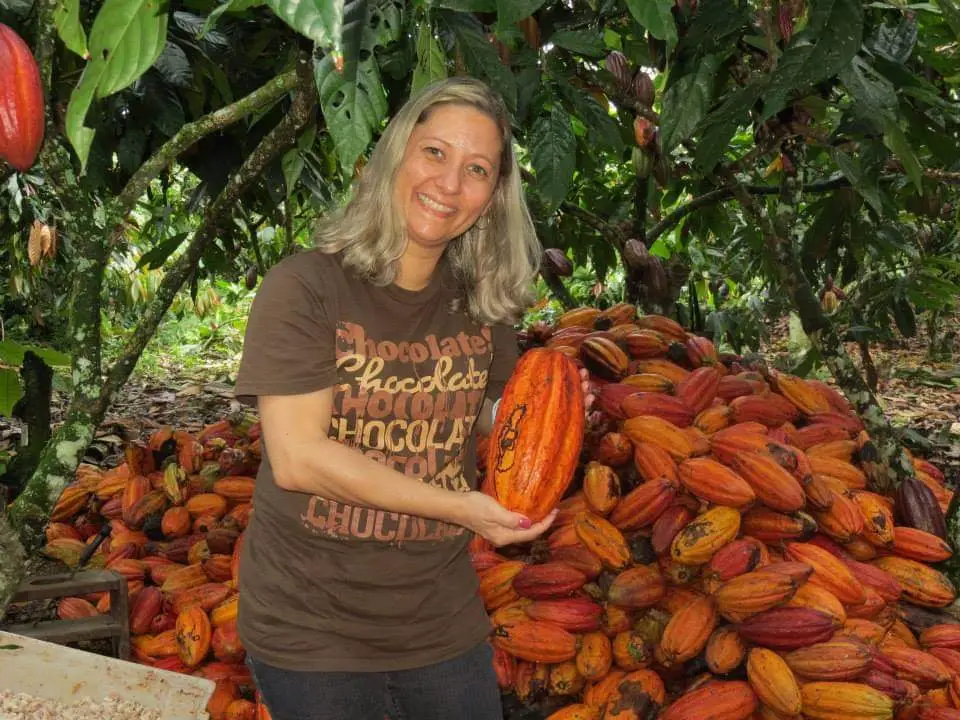Luciane Choucate comes from Salvador, the capital of Bahia on the northeast coast of Brazil, and has been associated with chocolate since she was young. Partly because her hometown is one of the key areas for cocoa production, without which there would be no chocolate: “My state is the largest producer of cocoa in Brazil, where production began in the middle of the 18th century. Thanks to cocoa, a strong agricultural industry developed, with numerous social and political consequences. Today, Bahia stands out for producing, in my opinion, the best quality cocoa in the world,” Luciane told Jutarnji.
“My story with chocolate started when I was 13 years old. I had two cacao trees in my yard, so I tried to make chocolate from the beans but didn’t have very good results. Many years later, as an adult, passion led me to try again, but this time I educated myself first. I attended bean-to-bar courses in Canada and Brazil and educated myself about the production and processing of cocoa on farms and in agro-industry institutes, considering that the raw material determines the final taste of the chocolates. And I tried, tried, and tried… More than ten years have passed since I started producing bean-to-bar chocolates. Since I already had my small production in Brazil, when I arrived in Croatia in 2018 I started looking for ways to find the necessary raw materials and equipment within the EU. Now I can also produce a small batch of high-quality chocolate here,” Luciane is proud.
When it comes to chocolate, he points out that the main challenge in Croatia is acquiring the primary raw material, i.e., cocoa beans: “In Brazil, I was able to visit farms, observe the harvesting and processing, and choose the batches of cocoa fruits (lots) that interested me the most, even choose cocoa by variety. Here in the EU, I buy cocoa from companies that import cocoa beans, but I’m already working on getting the best cocoa in the world, the one from my state, Bahia. I have good contacts with very high-quality producers there,” she explained. The procurement of cocoa beans itself is a complex and important process, not only for the sake of quality but also for the flavour profile that individual cocoa beans can provide: “Just like wine, which depends on the grape variety, soil, and climate, no cocoa vintage is the same. And that is amazing!!! As my husband likes to say, nature does not have an ISO 9000 quality standard. Every vintage brings new opportunities, challenges, and flavours. Just like wine that comes from different grape varieties, cocoa also has different varieties, such as Catongo, Para-Parazinho, Ipiranga, and others. Chocolates can also be blends of several varieties or from cacao trees from only one locality,” she pointed out.
Living in Croatia and a smaller town like Samobor has great advantages for Luciane: “What stands out most here for all Brazilians is safety. It is freedom. My family and I have adapted very well to Croatia, we have made many friends, and life in Samobor is a dream for those who have always lived in big cities. Croatia is a beautiful country, with mountains, rivers, lakes and the sea that is very close. Nature is respected… We love living here,” explains the warm-hearted Brazilian and adds: “Another very important thing! Just like Brazilians, Croats are passionate about coffee! I like to sit and enjoy coffee at my own pace,” she smiled.

Luciane currently offers four types of chocolate, dark with 72% cocoa, milk with 52%, milk with 52% cocoa and coffee, and white chocolate. The positive reactions of her customers when they taste Lu Choucate chocolates for the first time never fail: “The reaction is always very good. People are impressed with the taste of real chocolate, how they can taste the fruit of the cocoa tree, as well as the fact that dark chocolate can be very smooth and milky chocolate can be strong. Or how white chocolate, otherwise a source of discord, is actually not that sweet”. She also described her process of coming up with chocolates: “I always research and listen to what people like and want. I always strive to keep the cocoa content high and work to get the best possible flavour out of it. I start by designing the recipe, ensuring the cocoa solids and cocoa butter ratios are well balanced without losing the cocoa flavor. Then we produce chocolates in small batches to test the whole process and do many tastings, where friends are always welcome to give their opinion.”
Lu Choucate chocolates can be ordered via @luchoucatechocolatier on Instagram and Facebook and via the e-mail address [email protected]. Luciane notes that she is actively working to make her chocolates available in specialized stores. The price of one chocolate bar is three euros, but she points out that her customers usually order several at once, which she encourages for the sake of the financial sustainability of production. She has no shortage of good ideas, from the thoughtful expansion of the range to business development: “The plan is to set up a factory/shop with a cafe where people will be able to see the production of chocolate that they taste in all stages,” she emphasized and added: “I never get tired of hearing comments of people who have truly tasted chocolate for the first time. I love it! I’m passionate about my work,” she says with a smile and returns to the rented kitchen where the latest batch of delicious artisan chocolates will soon be created.

Bean-to-bar chocolate production
Production begins on the farm by selecting the best batches of cocoa fruits (lots), harvesting, fermentation, and drying. Lot selection even includes random cut testing of cocoa pod samples to confirm proper fermentation and drying.
Manual selection is done in the factory to separate only the best grains and remove all impurities. Only perfect grains are then roasted. The roasting affects the final taste of the chocolate, and the beans can be milder or more roasted, depending on the recipe and the potential of the cocoa bean itself.
After roasting, the cooled beans are broken, and the shell is separated, which results in smaller cocoa nibs. “The grains go through purification, for which I use mills or melangers that have stone rollers that mix the grains,” Luciane described. This reduces the size of the particles, and the resulting chocolate liqueur is exposed to oxygen, eliminating unwanted volatile substances. Next, the melanger refines and concocts the cocoa simultaneously, which can last 48, 72, or more hours. Now the formed chocolate is tempered, during which crystallization is controlled, and then poured into molds. In the end, the chocolate bars are packed and ready for consumption. This whole process takes two to three weeks.
For more, make sure to check out our dedicated Lifestyle section.










